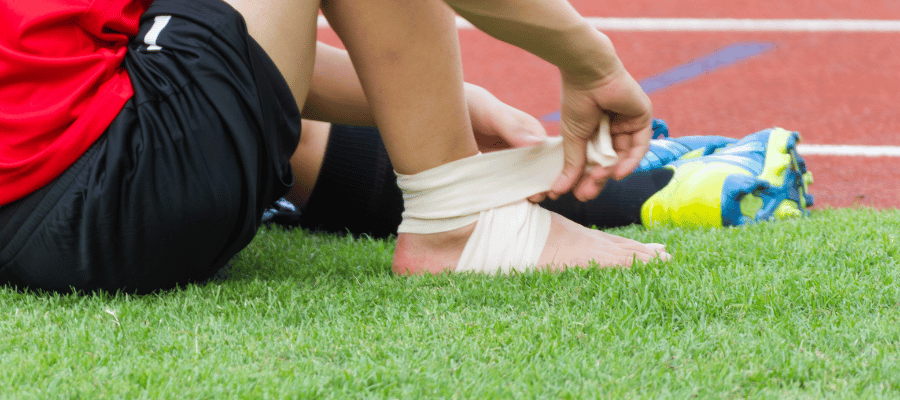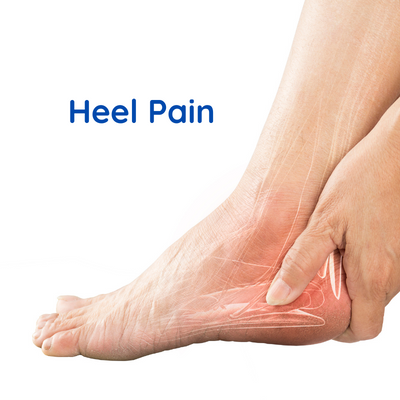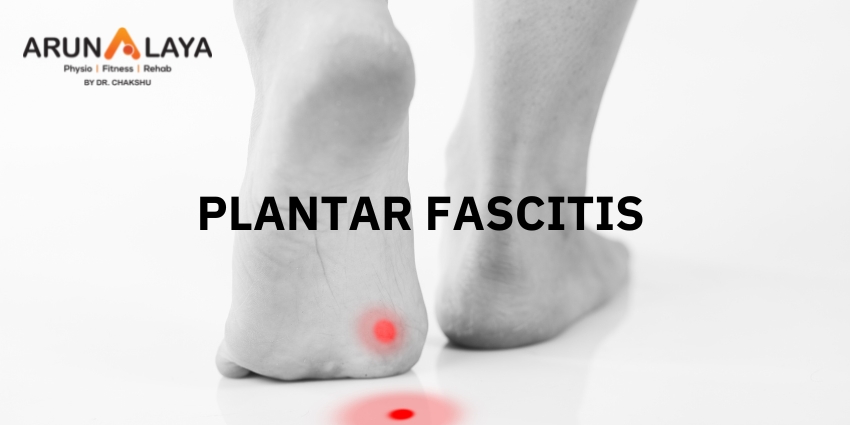FOOTBALLER’S ANKLE
Table Of Contents
- Introduction
- What is Footballer’s Ankle?
- Types of Footballer’s Ankle
- Symptoms
- Treatment
- Conclusion
Introduction
Footballer’s ankle, also known as anterior ankle impingement, is a condition characterized by the pinching of bone spurs and soft tissues in the front of the ankle. This condition often arises from repetitive movements and trauma, such as kicking, bending, or stretching the foot, common in football players and other athletes. The condition can lead to chronic pain, instability, and a reduction in ankle function. Understanding the causes, symptoms, and treatment options for footballer’s ankle is crucial for effective management and recovery.
What is Footballer’s Ankle?
Footballer’s ankle involves the growth of extra bone at the front of the ankle following repeated trauma or a severe ankle sprain. This repetitive motion causes soft tissues to become pinched, leading to swelling, inflammation, and thickening. As these tissues swell, they are more likely to be pinched between the bones of the ankle during movement, exacerbating the problem.
Types of Footballer’s Ankle
There are two primary types of footballer’s ankle:
- Bony Footballer’s Ankle: This occurs when the shin bone (tibia) jars against the ankle bone (talus), prompting the body to produce a bone spur in an attempt to heal itself. This bony lump can trap tendons, ligaments, or other soft tissues during dorsiflexion (when the foot is pulled upwards).
- Soft Tissue Footballer’s Ankle: In this type, the soft tissues such as tendons, ligaments, or joint capsule become pinched between the talus and tibia. This can occur due to repetitive kicking or flexing, or following an ankle sprain where scar tissue on a torn ligament thickens.
Symptoms
Footballer’s ankle can present a range of symptoms, including:
- Pain: Persistent pain in the front of the ankle, especially during movement.
- Swelling: Visible swelling around the ankle joint.
- Stiffness: Reduced flexibility and stiffness in the ankle.
- Reduced or Painful Range of Motion (ROM): Difficulty in moving the ankle through its full range of motion without pain.
- Gait Problems: Difficulty in walking or running, often accompanied by a limp.
- Balance Problems: Challenges in maintaining balance, particularly during athletic activities.
Treatment
Physiotherapy is a cornerstone in the rehabilitation of footballer’s ankle. It offers a variety of treatment options tailored to the patient’s specific needs, aiming to reduce pain, improve mobility, and restore function.
Exercise Programs
- Dorsiflexor Strengthening: Exercises aimed at strengthening the muscles that lift the foot.
- Ankle Eversion Strengthening: Exercises to strengthen the muscles that turn the foot outward.
- Ankle Inversion Strengthening: Exercises targeting the muscles that turn the foot inward.
Balance Exercises
- Sports-Specific Training: In the case of footballers, training programs are designed to simulate the movements and demands of football, helping to improve balance and prevent future injuries.
Electrotherapy
- Use of electrical stimulation to manage pain and promote muscle function.
Hydrotherapy
- Water-based exercises that provide resistance and support, helping to strengthen the ankle without putting too much stress on it.
Taping
- Application of tape to support the ankle joint, reduce swelling, and provide pain relief.
Ultrasound Therapy
- Utilizes sound waves to accelerate the healing of soft tissues.
Core Strengthening Exercises
- Exercises aimed at improving overall body strength and stability, which can help in maintaining proper posture and reducing stress on the ankle.
Laser Therapy
- Use of focused light to reduce inflammation and promote tissue healing.
Conclusion
Footballer’s ankle can significantly impact an athlete’s performance and quality of life. Early recognition and appropriate management are key to successful recovery. Physiotherapy offers a range of effective treatment options, from strengthening exercises to advanced therapies like ultrasound and laser treatments. With a tailored rehabilitation program, individuals suffering from footballer’s ankle can regain their strength, mobility, and return to their sport with reduced risk of re-injury.
If you suspect you have footballer’s ankle, consult a physiotherapist to develop a personalized treatment plan that addresses your specific needs and helps you get back to your active lifestyle.
“At Arunalaya Healthcare, we pride ourselves on being the best physiotherapy center in Delhi. Our dedicated team of experts offers top-notch physiotherapy treatment tailored to your needs. Experience the difference with the leading physiotherapy clinic in Delhi area. Our commitment to excellence ensures that you receive the best physiotherapy care possible. Trust Arunalaya Healthcare for the best physiotherapy treatment in Delhi. Our advanced physiotherapy solutions set us apart as the premier choice for your rehabilitation needs. When it comes to physiotherapy, our center stands out as the best in Delhi. Choose Arunalaya Healthcare for comprehensive physiotherapy solutions that deliver results. Visit Arunalaya Healthcare today and discover why we are the best physiotherapy center in Delhi.”
Physiotherapist in Patel Nagar | Physiotherapist for Home Visit in Patel Nagar | Physiotherapy in Patel Nagar | Best Physiotherapist in Patel Nagar | Physiotherapist Near Me | Physiotherapy Near Me | Best Physiotherapist in Delhi | Best Physiotherapist in India | Physiotherapy Center in Patel Nagar | Spine Clinic Near Me | Back Pain Physiotherapy Near Me | Sports Physiotherapist in Delhi | Stroke Physiotherapy | Paralysis | Cerebral Palsy | Best Sports Injury Physiotherapist in Delhi | Best Sports Injury Physiotherapy in Delhi | Physiotherapy Home Service | Physiotherapy at Home | Home Visit Physiotherapy | Advanced Physiotherapy in Delhi | Physiotherapy Clinic Near Me | Chest Physiotherapy Near Me



